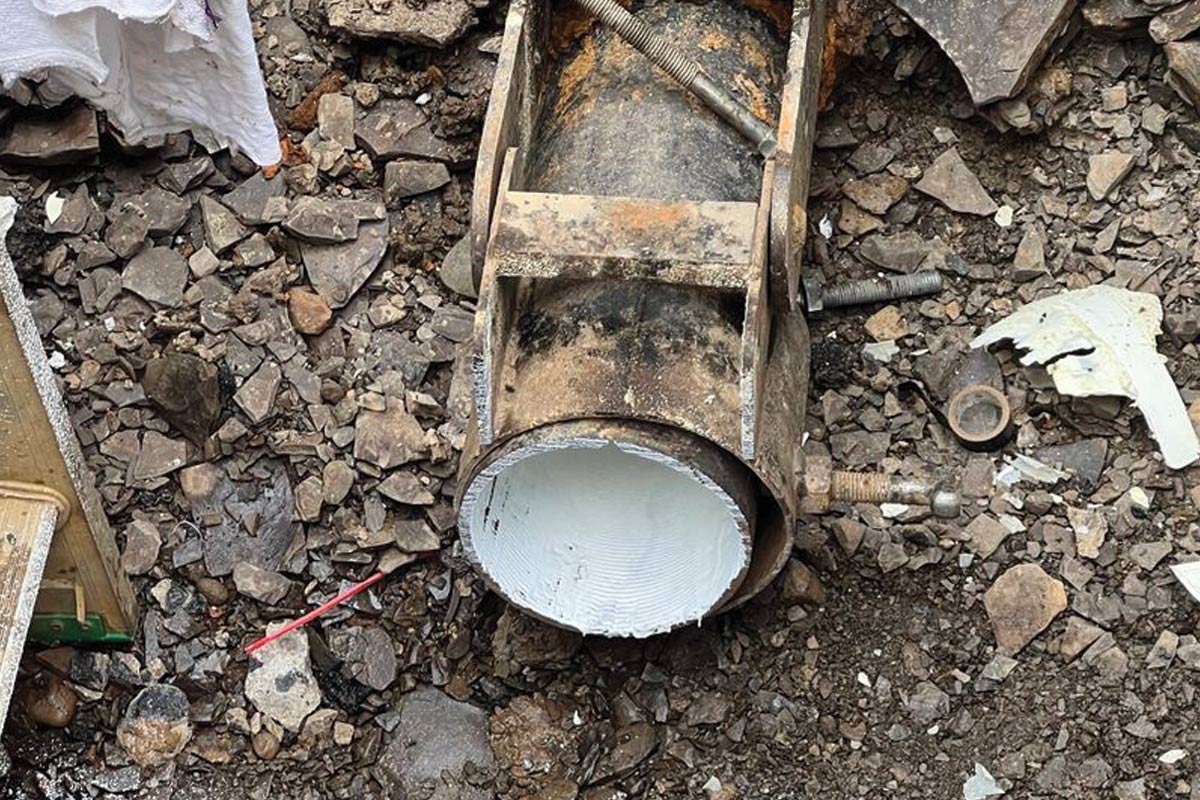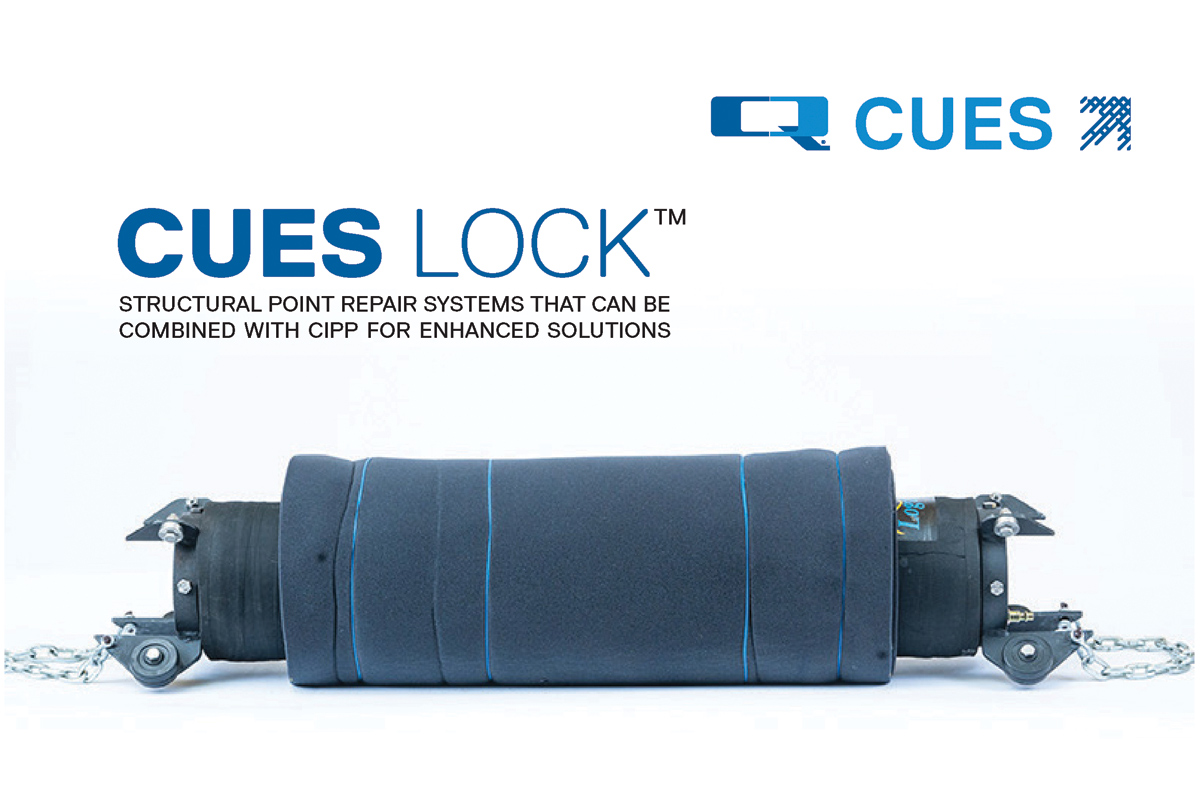
Critical Condition: DC Water Addresses Emergency Repair of Brick Sewer
October 9, 2017
In 2014, in the heart of Washington D.C., a five-story residential building was inadvertently constructed over the top of DC Water’s North East Boundary Trunk Sewer (NEBTS). The construction of the building left only about 2 ft of soil between the top of the pipe and bottom of the building. Once this was discovered, DC Water immediately began assessing the sewer to determine if and what damage may have occurred due to the introduction of the new building.DC Water’s NEBTS is a brick structure that was constructed over 100 years ago, and serves as a critical part of the inner city sewer system. It carries major flow during surge conditions, carrying up to 3,500 mgd flow in a 15-year rain event.
DC Water worked to assess the pipe first through physical inspections. The inspection uncovered significant tension stresses between the 1 and 3 o’clock zone of the sewer due to the unbalanced load of the building construction over the sewer trunk. In addition, the visual inspections found a significant longitudinal crack, or fracture, in the crown of the sewer. As the fracture was monitored it propagated in length in the months of analysis, design, planning and repair implementation.
RELATED: 2017 Trenchless Technology Roundtable: Navigating an Uncertain Future
Given the location and nature of the longitudinal fracture identified, it was a certainty that a repair of the pipe would be necessary. Compounding the complexity, the dynamic fracture posed a real challenge in that a mirror fracture could occur if the repair material installed did not hold.
Several repair options for the brick sewer pipe were considered. However, due to the unique shape of the pipe and other challenges such as the project site being in a densely populated residential neighborhood, there were few viable options. Also, chief among the constraints was that the repair needed to take place without disruption to live flow within the bottom trough of the sewer.

DC Water’s NEBTS is a brick structure that was constructed over 100 years ago, and serves as a critical part of the inner city sewer system. It carries major flow during surge conditions, carrying up to 3,500 mgd flow in a 15-year rain event.
NETBS Brick Sewer
The repair plan would need to accommodate the live flow, address the growing crack, deal with moisture mitigation, and provide strengthening of the overall repair area of the brick sewer. DC Water had previous experience with carbon fiber technology and chose the Structural Technologies V-Wrap Carbon Fiber-Reinforced Polymer (CFRP) system as the preferred repair option for the pipe.
Design of the V-Wrap for repair of the NETBS was performed by Simpson, Gumpertz & Heger (SGH), a firm renowned for its experience analyzing and designing repair systems for critical pipelines. SGH developed 2D and 3D finite element models to evaluate the stress state of the sewer. Both linear and nonlinear analyses were performed that took into account the water pressure, cracking in the crown, building loads, and soil excavation over the sewer. Based on these results, SGH then designed the CFRP liner in accordance with the AWWA C305.
RELATED: Project of The Year- Rehabilitation Honorable Mention Winners!
Communication
Before installation of the repair system could take place, DC Water engaged its emergency response team to oversee the project and ensure effective communication by all parties. This included a program put in place so that all necessary parties and decision-makers took part in weekly calls to make sure that any planned and emerging matters could be addressed in a timely manner.
One area of critical daily communication centered on the pipe having to be kept in service throughout the repair process from start to finish. To ensure the necessary live flow, a protective canopy was installed across the trough section of the pipeline to prevent construction debris from interfering with the flow.
It was also essential to set a strategy to deal with storm events that had the potential to fill the pipe with a combination of water drainage and sewage. The precaution put in place included personnel staged immediately upstream as well as 5-10 minutes upstream to monitor the flow. In addition, the project team discussed weather conditions as part of daily and weekly calls and work was halted for potentially dangerous conditions.
Repair Implementation
The repair plan called for repair of the crack and installation of the V-Wrap CFRP system into the crown area of the pipeline at an initial length of approximately 150 lf. This length grew to 195 lf by the end of the project. Prior to construction, a specialized scaffolding system had to be installed within the 22-ft diameter sewer. The scaffolding system consisted of a large work platform at the top and two smaller platforms below along the horizontal benches.

DC Water had previous experience with carbon fiber technology and chose the Structural Technologies V-Wrap Carbon Fiber-Reinforced Polymer system as the preferred repair option for the pipe.
The scaffolding system was anchored into the two horizontal benches of the pipeline, so that in the event of a flood the scaffold could be left in place and would not wash downstream and cause damages. To allow for proper environmental control, a bulkhead was installed on both ends of the repair area with reinforced plastic anchored to the trough cover and sides.
Once installation of the scaffolding system was complete, the repair work could commence. Crews prepared the brick surface of the sewer with abrasive blasting, and performed ASTM D4541 bond testing to confirm that that surface preparation met necessary adhesion properties. The crack, which had grown in length from the beginning of the project, was then repaired using cementitious grout.
Given completion of the project as winter transitioned to spring, ground thaw became a factor and during the project water intrusion was noticed at grout lines and through the porous bricks. This challenge was addressed by Structural Group through the use of specialized chemical grouting. Structural Group’s on-staff moisture control specialists used different types of materials as well as different depths and frequencies of grouting to appropriately mitigate the water. In addition, permanent French drains and one-way valves were installed into the pipeline walls to further mitigate the moisture issue.
After the surface preparation, crack injection, and moisture control was completed, crews installed the V-Wrap CFRP system. Multiple layers of longitudinal and circumferential material was installed onto the top portion of the brick sewer at the area of the crack, and down the walls.
RELATED: Hawkins Stepping Down as DC Water CEO, General Manager
A chemical-resistant top coat was installed over the entire CFRP system, given the constituents of the NEBTS line. The carbon fiber materials utilized provided the owner and consultants with the least invasive, most economical alternative to deliver the strengthening of the 110-year-old-plus brick sewer line to meet design requirements for the new loads introduced. The project was completed within the allotted time and budget, with zero safety incidents.
DC Water and the project team on the NEBTS Brick Sewer Repair demonstrated that adopting a design-build approach to emergency repairs can lead to rapid and effective implementation of leading solutions to solve the most challenging structural pipeline issues.
This article was written by Steve Bian, P.E., MSCE, DC Water; and Anna Pridmore, PhD, P.E., Structural Technologies LLC.




